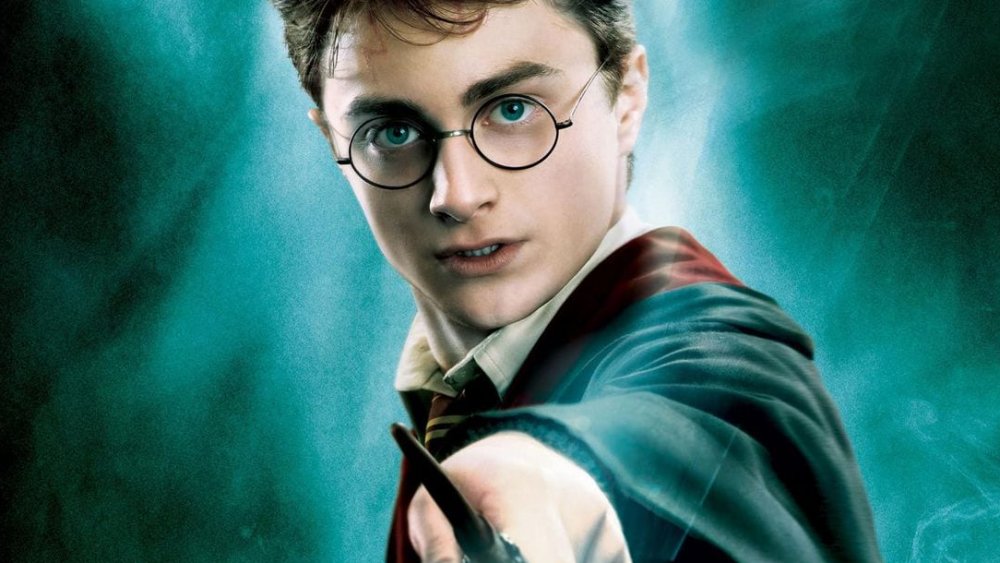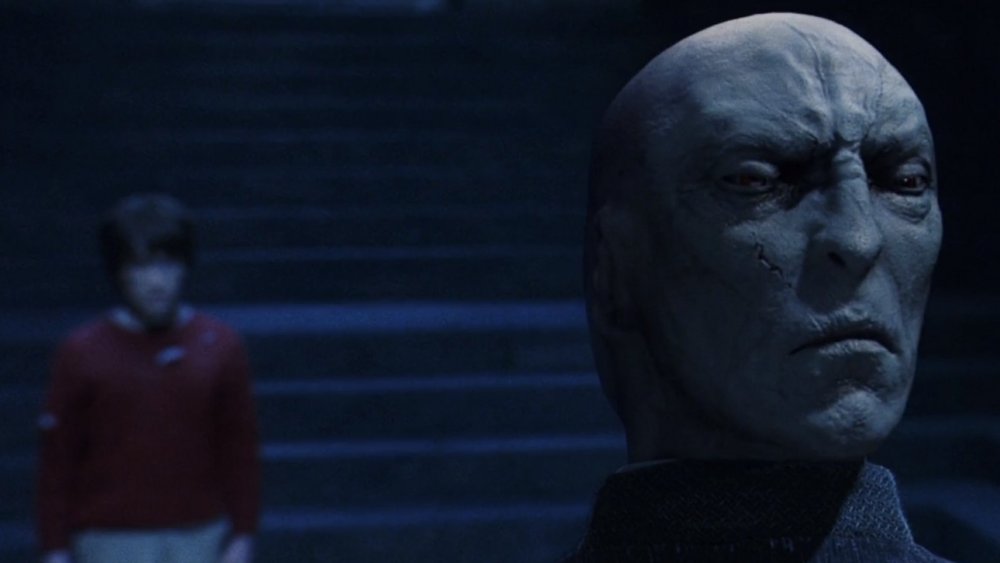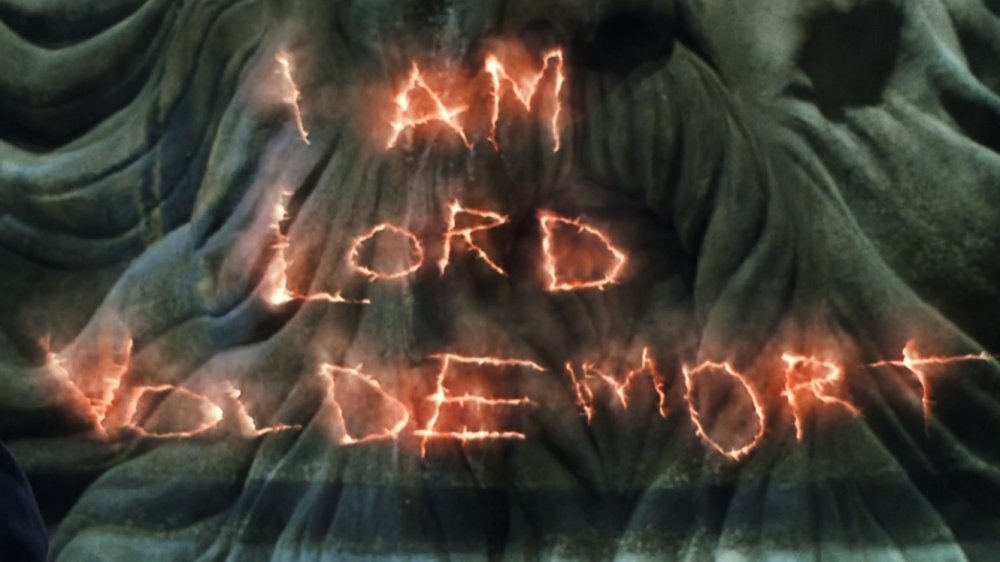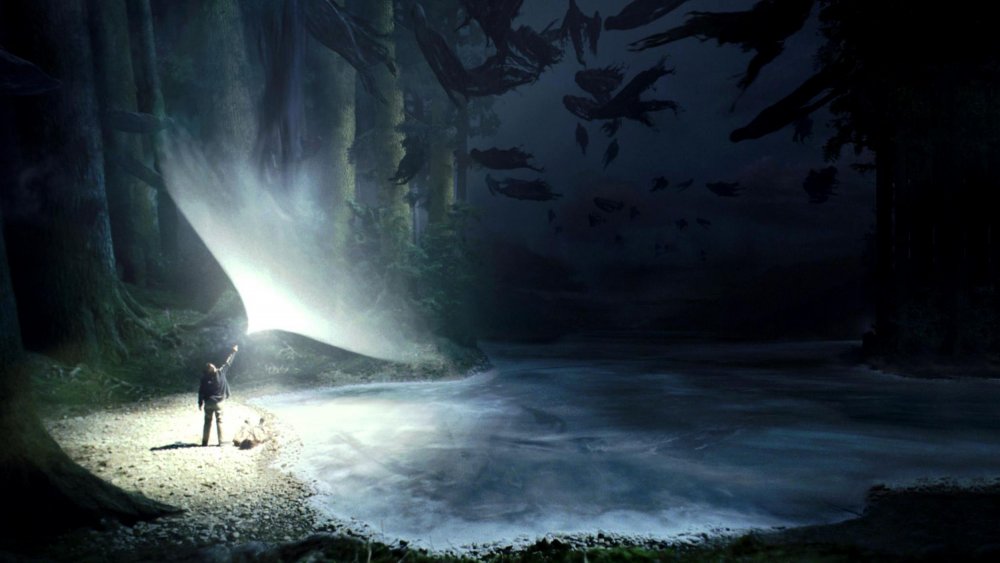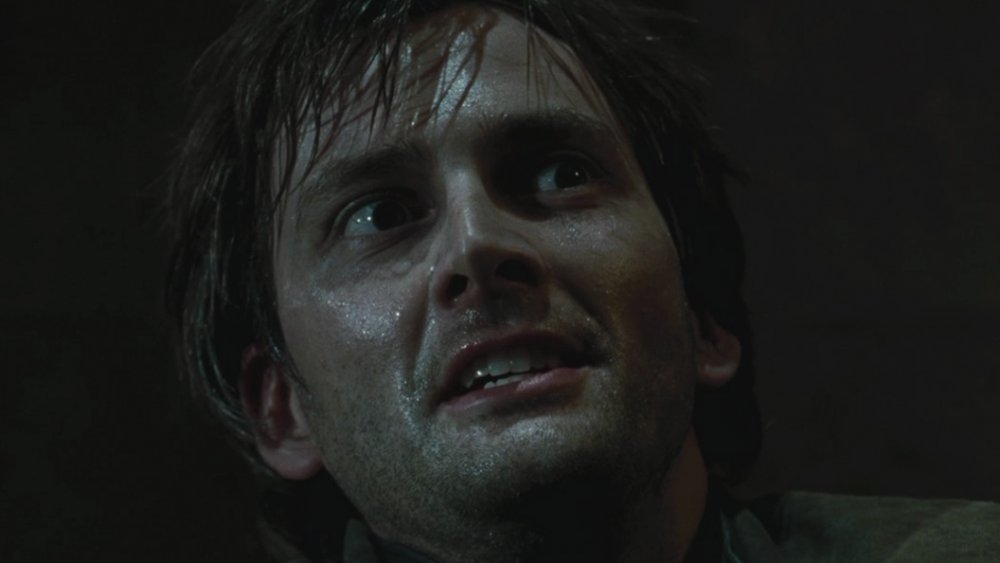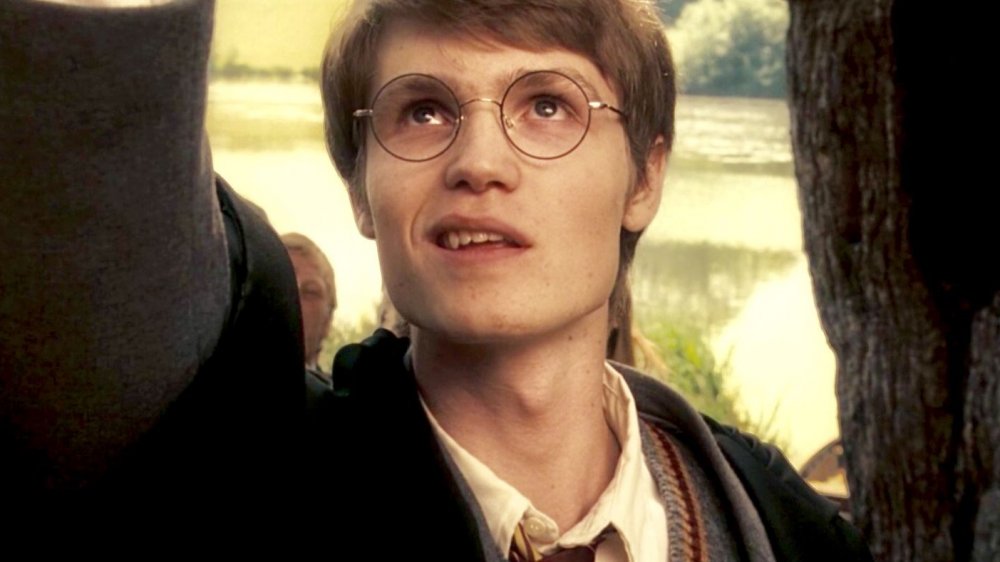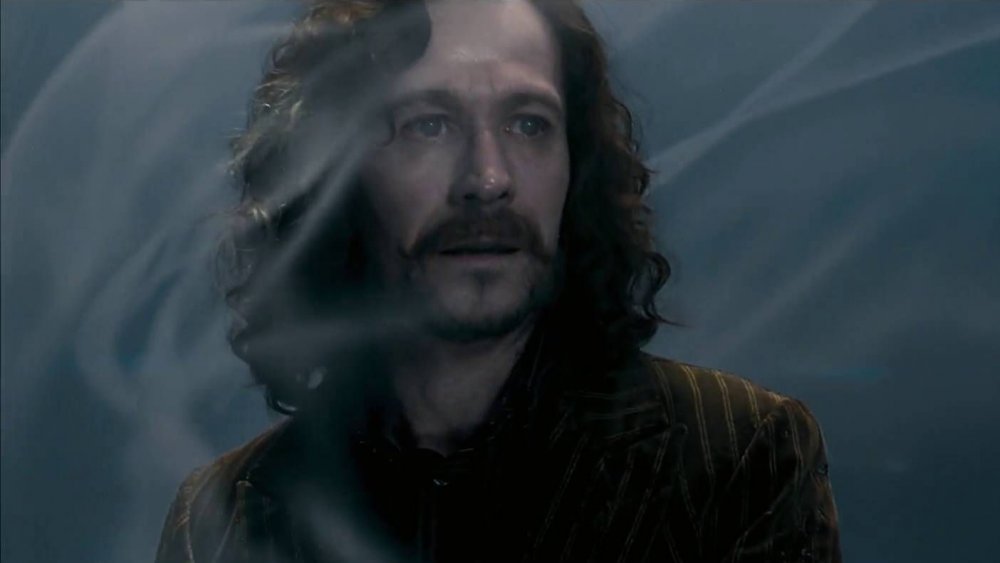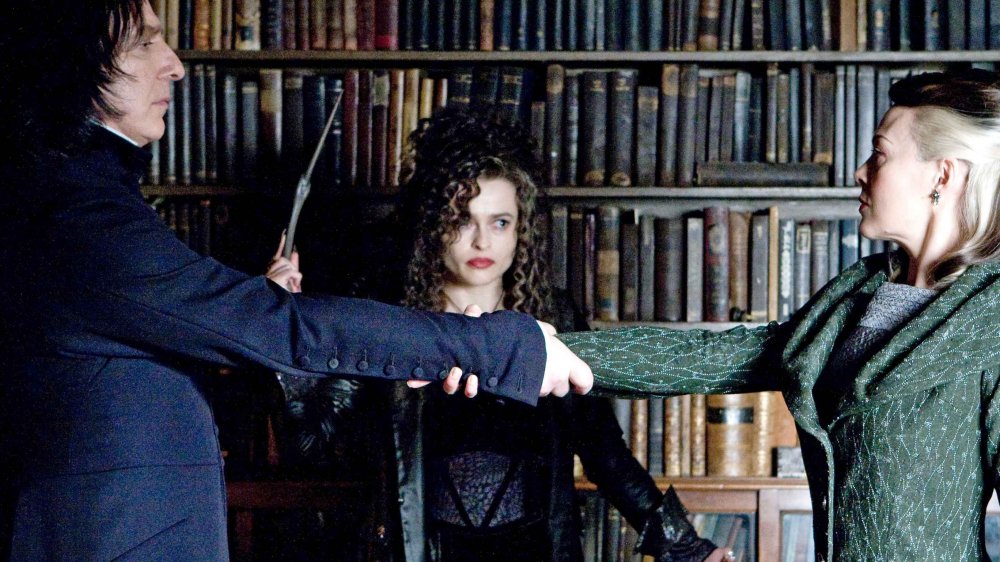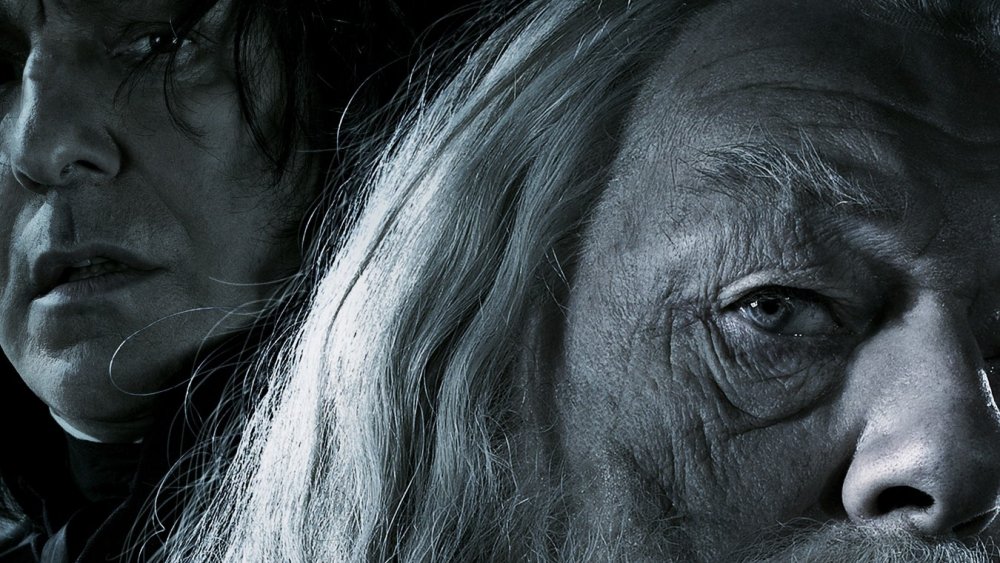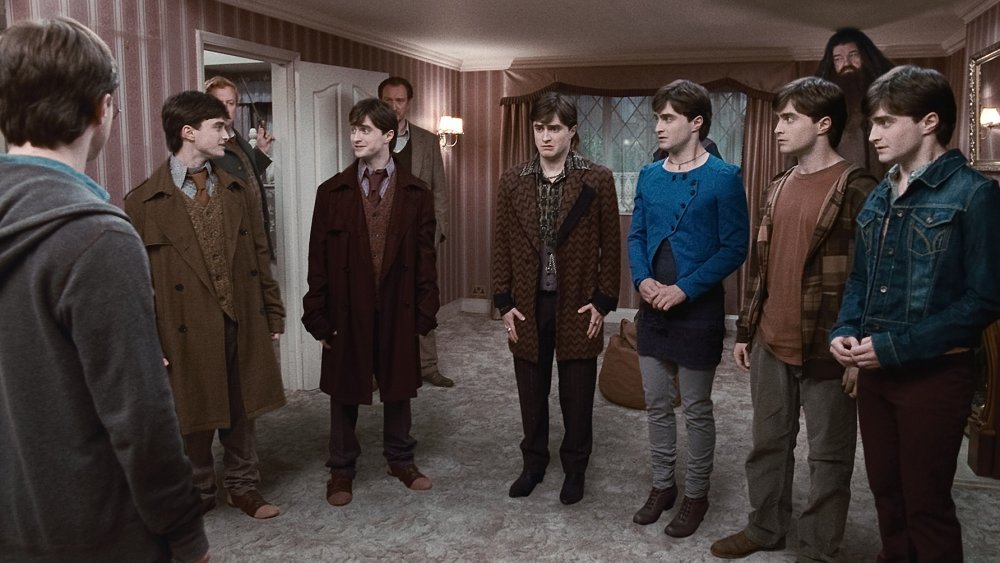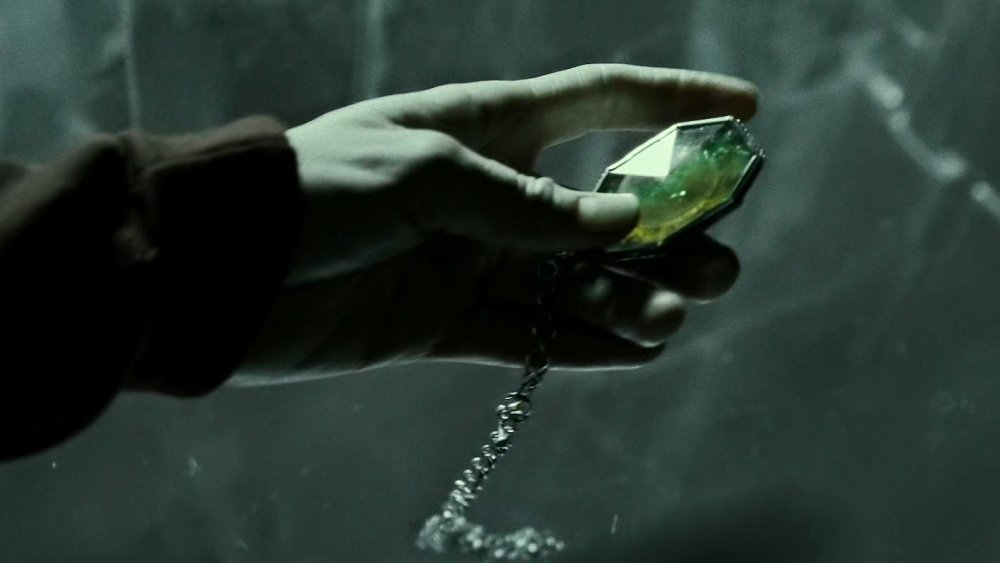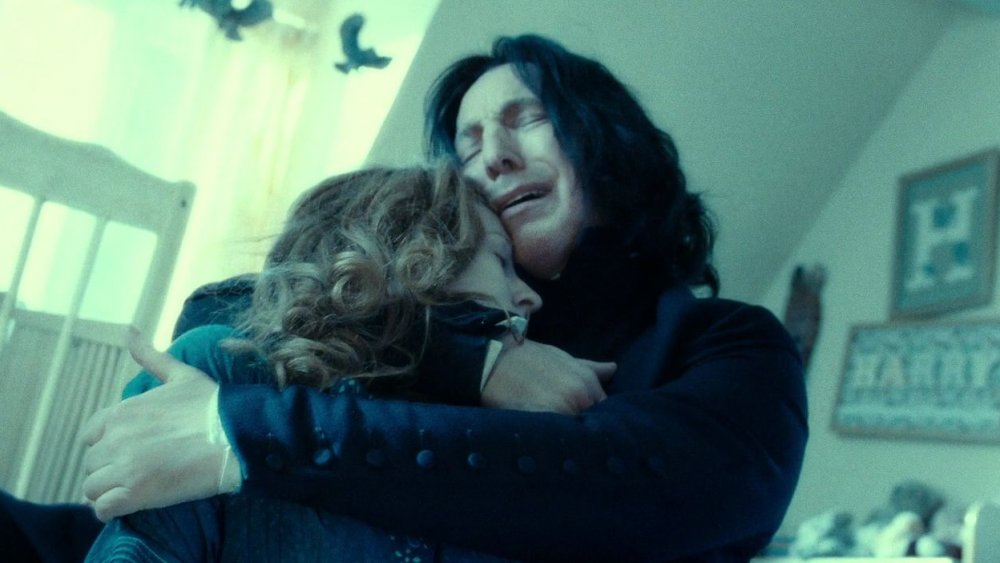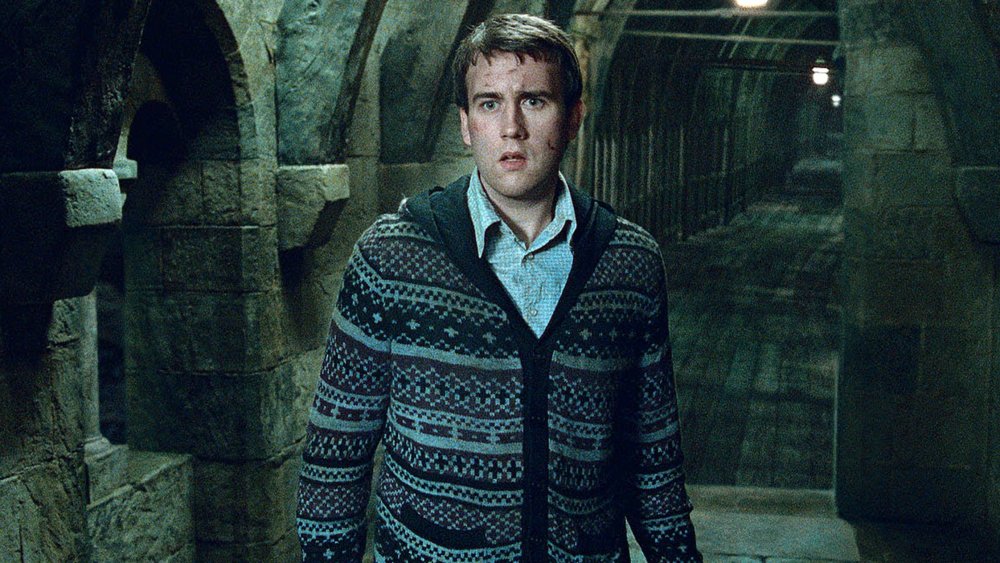The Most Paused Moments In Harry Potter Movies
The Harry Potter movies are generation-defining. Everyone has a favorite Hogwarts house, a favorite couple, a favorite antagonist, and of course, a favorite film. Midnight premieres were attended, costumes were made, and adaptational changes were (and are) hotly debated. Today, the movies air regularly on TV, and they're available on a wide variety of streaming services. Sure, ancillary books have been released, the Fantastic Beasts movies are in full swing, and a theme park offers fans a chance to visit Hogwarts in person. But the movies were millions of fans' introduction to the wizarding world, and they'll always have a special place in the fandom's heart as a result.
What makes them so special? It's a little bit of everything, really. The Harry Potter series is a well-balanced blend of classic fantasy, coming-of-age heroism, war-torn allegory, and a heaping helping of mystery. These disparate elements simmer beneath the surface at all times, but occasionally, they come to an explosive boil. When that happens, what results are some of the most memorable moments of the entire series, and we're here to examine those scenes of love, betrayal, revelation, and horror. From the series' starry-eyed beginning to its electrifying end, these are the most paused moments in the Harry Potter movies.
(Be warned, major spoilers for the entire franchise below.)
Harry Potter discovers Professor Quirrell's secret
Two sinister figures dominate Sorcerer's Stone — Severus Snape, the prickly potions professor, and Voldemort, the villain who murdered Harry's parents ten years prior. As Harry's first year at Hogwarts unfolds, these enigmatic men reveal themselves as pivotal to his journey ... but not in the ways Harry expected. This tension climaxes at the very end of the movie, when Professor Quirrell, known for his timidity and his turban, reveals Voldemort's face growing out the back of his skull. He isn't just the Dark Lord's agent within Hogwarts ... he's his physical host.
Multiple revelations are wrapped up in this moment. Voldemort is, for one thing, not actually gone, as Dumbledore always warned but few wanted to believe. Sorcerer's Stone marks his first attempt at resurrection, and like his others (including the one that succeeds), it displays a mastery Harry is absolutely nowhere near. Moreover, Snape — caught at the scene of multiple crimes involving Harry, who he openly despises—- isn't just exonerated but revealed to have been foiling Quirrell's murderous plans all year long. This moment uncovers explosive truths, sees Harry take his first steps towards world-changing heroism, and kicks off Harry's long and complex relationships with Voldemort, who will stop at nothing to kill him and Snape, whose true loyalties remain murky until the very end of the series. Talk about a scene worth replaying.
We learn Tom Riddle's other name in Chamber of Secrets
Tom Riddle's diary appears, at first, to be a cleverly charmed object, as it writes back. Ginny Weasley is overjoyed to discover this. Could there be a more perfect confidant for an anxious first-year girl? As Tom Riddle himself puts it, "Ginny poured out her soul to me, and her soul happened to be exactly what I wanted." Ginny's feelings aren't just listened to — they're devoured.
Riddle's endgame comes to light in the Chamber of Secrets itself. There, he greets Harry on his own two feet, a young man in Slytherin robes. The diary wasn't charmed but possessed, and once Ginny Weasley, unconscious at his feet, has been drained entirely of life, he'll be free to live beyond its pages. Why has he done this? He explains with one of the most indelible images of the Harry Potter series. His name, "TOM MARVOLO RIDDLE," written in fiery, floating letters, rearranges itself to spell "I AM LORD VOLDEMORT." As fans later learn, the diary is a horcux, an item containing a shard of Voldemort's soul. This moment reveals yet another shocking facet of Voldemort's power, offers a glimpse of the young man he once was, and introduces the audience to a whole new level of Hogwarts mystery that Harry will spend six more movies exploring. Nothing in this world, from handsome young Slytherin students to battered old diaries, is as it seems.
We have to press pause when Harry casts the Patronus charm
Prisoner of Azkaban brings Harry closer than ever to the father he never knew. The Marauder's Map, created by James Potter and his dearest friends, makes its debut here, as do the Marauders themselves — Remus Lupin, Harry's new Defense Against the Dark Arts professor, Sirius Black, an escaped prisoner on the hunt for Harry, and Peter Pettigrew, who Black allegedly murdered 12 years prior. As Harry learns, Pettigrew was the real traitor, and Black was framed. The revelation of this truth joyfully reunites Harry, Lupin, and Sirius ... but also culminates in Pettigrew's escape.
Things grow dire when Harry and Sirius, fleeing Lupin in his werewolf form, are attacked by Dementors. A distant figure saves them by casting the Patronus charm, and Harry is certain the caster was his father. Once he and Hermione travel into the past, however, he realizes that the person he saw wasn't his father ... it was himself. Knowing what he must do, Harry steps out from the shadows and sets the night ablaze with his Patronus. It's one of the most emotionally complex moments in the series. He is, at once, confronting the finality of his father's death, embracing the love he still feels for him, and saving the godfather he never knew he had. He's at his most heroic, yet closer than ever to the tragedy that tore apart his family.
The real Mad-Eye Moody is revealed
The entire Harry Potter series changes with the end of Goblet of Fire. Voldemort is resurrected, Harry watches a classmate die in front of him, and the Death Eaters assemble, ready to reignite the war that almost destroyed the wizarding world 13 years prior. But even once he's escaped Voldemort, Harry isn't safe. Professor Moody, the cantankerous Defense Against the Dark Arts professor, brings Harry to his office, asks about Voldemort's resurrection, and finally reveals himself to be Barty Crouch Jr., one of Voldemort's most loyal servants.
The shock of this moment is, in some ways, even more intense than that of Voldemort's rebirth. It's revealed that Crouch-as-Moody has been working all year to make Harry the Triwizard Tournament's winner, and thus positioned to be brought to Voldemort. The worst part is ... it works. Sure, Crouch is caught, but he did exactly what he needed to do. Voldemort is back, and the protection Harry enjoyed from the blood magic of his mother's sacrifice has been rendered moot. It's a crushing blow to the forces of good, especially on the heels of Cedric Diggory's tragic death, and one of the darkest moments in the series.
The truth about James Potter, teenage bully
Snape might work for the good guys, but that doesn't mean he and Harry ever get along. Order of the Phoenix takes this animosity to new depths when Snape is ordered to give Harry lessons in Occlumency, the magical art of shielding one's mind from magical invasion. Snape takes every opportunity to project his frustrations with Harry's father onto Harry himself, which Harry insists are wrong, as his father was "a great man." An accidental peek into Snape's mind puts the lie to this. Harry sees his father at 15, tormenting Snape in front of a crowd of students, every bit the bully Snape has always accused him of being.
It's an extremely brief scene, but it packs an enormous emotional punch. Harry, ostracized at this point in the series for "lying" about Voldemort's resurrection, sees himself in young Snape, which makes his father Dudley, Cornelius Fudge, and everyone else who's ever had a go at him just because they can. There's no later reveal that makes this easier to swallow, either. Harry learns that James really was a bully, and though he did grow out of it, the pain he caused is real. It's a turning point for Harry, who must reconfigure his understanding of his father, and for his relationship with Snape — which, as any fan knows, grows even more complex from here.
Sirius goes beyond the veil
Sirius is the closest thing Harry ever has to a true parent, and he's an intimate link to the father Harry never knew. Order of the Phoenix plumbs the depths of their relationship in many ways, not all of them positive — though they grow closer, Sirius can't entirely divorce his friendship with James from his relationship with Harry. The tragedy of his life, combined with his inability to act in the war against Voldemort, leaves him stranded between the lost era of his boyhood and his stymied present.
Finally, near the end of the movie, he's able to come to Harry's aid in a brutal battle against the Death Eaters in the Department of Mysteries, where the fundamental forces of life are studied. Harry lands a spell, Sirius cries, "Nice one, James!" ... and Bellatrix Lestrange hits him with a killing curse. Harry watches in horror as Sirius topples through a mysterious freestanding archway and is borne away by unseen forces. Sirius has literally crossed from the land of the living into the land of the dead. It's an abrupt tonal shift — moments before, Sirius and the Order's arrival had been triumphant — and a warning of the war to come. Loved ones will be lost. Death is utterly final. And Harry will need to ready himself for a battle no one can win for him.
Snape's Unbreakable Vow
The wizarding world has changed by the time Half-Blood Prince begins. Harry and Dumbledore are no longer mocked in the press, the Malfoy family has been publicly disgraced, and Voldemort has begun openly attacking the magical and muggle worlds. The stakes are further heightened when Narcissa Malfoy and her skeptical sister, Bellatrix, visit Snape's home. Narcissa begs Snape to protect Draco during the upcoming school year. Bellatrix insists that Draco should be "proud" of the dangerous task he's been assigned by Voldemort. Snape makes an Unbreakable Vow to Narcissa to keep Draco safe and, if necessary, carry out his mysterious duty.
Though Snape's status as a double agent for the Order is known to the audience at this point, this scene muddies the waters. Narcissa and Bellatrix clearly believe Snape to be a double agent for their side, and to be honest, it's hard not to be convinced by Alan Rickman's performance. Moreover, the vow he makes ensures his loyalty — if one breaks an Unbreakable Vow, death is immediate and unstoppable. Then there's the unsaid duty Draco's been saddled with. What, exactly, does he have to do? Why has Voldemort tasked him, a teenager, with something so crucial? And what should the audience make of Narcissa's motherly love trumping her loyalty to Voldemort in this moment? All these questions go straight to the heart of the series' ultimate climax, making this a truly pivotal scene.
Dumbledore's death is one of the most pause-worthy moments in the Harry Potter franchise
In The Half-Blood Prince, after Harry and a weakened Dumbledore return from retrieving one of Voldemort's horcruxes, they're confronted by Draco Malfoy. He finally reveals the task Voldemort set for him. He has to kill Dumbledore, or Voldemort will kill him. Dumbledore attempts to calm Draco, who's clearly terrified, but the arrival of the Death Eaters puts that to an abrupt end. Then Snape makes his entrance, and locks eyes with Dumbledore, who says two simple words, "Severus ... please." With no hesitation, Snape casts the killing curse, blasting Dumbledore's lifeless body onto the ground below.
This is one of the most complicated scenes in the entire series. Snape appears to betray Dumbledore, who bet incorrectly on Snape's mercy in his final moments. But knowing the truth of Snape and Dumbledore's arrangement, revealed in the final movie, doesn't diminish the scene's power. In fact, it might enhance it. This is the moment that positions Snape perfectly. No one will doubt his allegiance to Voldemort now, which allows him to further Dumbledore's ultimate plan. Beyond all of this is the sheer emotion of the scene. Dumbledore — one of the greatest wizards alive, leader of the Order, and Headmaster of Hogwarts — is dead. The wizarding world loses its most powerful protector, and Harry loses another loved one. The war was already on, but in this scene, it reaches new depths of despair.
The flight from Privet Drive
Deathly Hallows — Part 1 hits the ground running with Harry's frantic flight from Privet Drive. Six members of the Order take on his appearance through the use of Polyjuice Potion, and a complex flight plan is devised in which Harry and each fake-Harry are paired with an Order member and sent on a unique path towards the Burrow. Things quickly go wrong, however. The Death Eaters were tipped off, and a vicious, mid-air battle ensues.
The scene is thrilling, at first. Harry and Hagrid weave in and out of traffic on Hagrid's motorbike, Voldemort reveals himself as capable of independent flight, and Harry's wand, in an early indicator of wandlore's importance to the final battle, destroys the wand Voldemort borrowed from Lucius Malfoy. Then, suddenly, the scene turns tragic. Hedwig is killed as she attempts to protect Harry, George loses an ear, and upon landing at the Burrow, the Order learns that Moody was killed. The war for the wizarding world is well and truly raging now, and no one, not even beloved animal companions or well-seasoned warriors, is safe.
Ron destroys the locket in Deathly Hallows — Part 1
Voldemort's locket horcrux, worn in turns by Harry, Ron, and Hermione as they travel the country, brings out the worst in Ron. When our heroes get their hands on the Sword of Gryffindor, capable of destroying a horcrux, Harry knows it must be Ron who dispatches this particular shard of Voldemort's soul. Sword in hand, Ron prepares to strike, only to be confronted by the locket's horrific defenses. Terrible visions of Harry and Hermione materialize, taunting Ron for thinking they needed him, then kissing passionately. Ron's anger and humiliation threaten to overwhelm him ... until he marshals his courage, swings the sword, and destroys the locket for good.
Harry, Ron, and Hermione's friendship is the heart of the series, but Ron's insecurity had long threatened to tear their trio apart. This scene takes those fears to their apotheosis, but it also shows us his courage. Ron might struggle to define himself against his talented siblings, his famous friend, and the brilliant girl he's fallen in love with, but he's also stuck beside his loved ones through war, murder, and abject terror. This scene forces Ron to choose between the sullen certainty of being second-best and the terrifying freedom of doing what's right, even if there's no guarantee of success, fame, or love. He faces his nightmare and realizes he's stronger than it. As Hogwarts students once chanted, Weasley is indeed our king.
Snape is revealed in the final Harry Potter film
Snape's loyalties are at the heart of the Harry Potter series. Upon his death in Deathly Hallows — Part 2, they're revealed in their entirety. Snape was on the side of the Order all along. There are three shocking elements of this revelation, among the most momentous in the series. First, there's the fact that Professor Snape, a man who took out schoolboy jealousies on an 11-year-old, is a man of tremendous heroism. Second, there's the fact that Snape did it all because he loved Lily Potter. And third, revealed through Snape's memories of Dumbledore, there's the greatest bombshell of all: Harry himself is a horcrux, and he must die to bring down Voldemort.
This scene is staggering in its importance. Snape's loyalties, Harry's magical nature, and a key element of Dumbledore's plan are revealed in five minutes. Just one of these facts would've been enough to bowl fans over. All three revealed at once is the cinematic equivalent of a tsunami. Harry, hollow-eyed and absolutely certain of his duty, strides off to die. The audience is left to sift through the rubble the scene leaves in its wake. Was Dumbledore justified? Should Snape be considered a hero? Did anyone else know? There are no easy answers to these questions. And that's what makes it one of the most unforgettable moments of the series.
Neville swings the sword
Neville Longbottom isn't cool. He's the kid with a toad, best known for misplacing things and having a goofy name. Little by little, however, he comes into his own by standing up to bullies, joining Dumbledore's Army, and fighting alongside his friends at the end of Order of the Phoenix. Deathly Hallows — Part 2 unveils a Neville who's come entirely into his own. He's spent the past year leading the resistance within Hogwarts, and he's ready to bring the war to end.
As fans learned in Order of the Phoenix, the prophecy that foretold a boy born at the end of July, capable of bringing Voldemort down, could've applied to Neville or Harry, and for whatever reason, Voldemort chose the latter. In one dramatic moment, Neville makes it clear that the world would've been in good hands had he become the boy with the lightning scar. As Harry and Voldemort duel, Neville takes the Sword of Gryffindor, descends upon Nagini, Voldemort's final horcrux, and slices off her head in one smooth and fatal stroke. Voldemort, rendered mortal, perishes quickly afterward when his own killing curse rebounds upon himself. It might be remembered as Harry's victory, but fans will never forget that it's Neville's as well.
